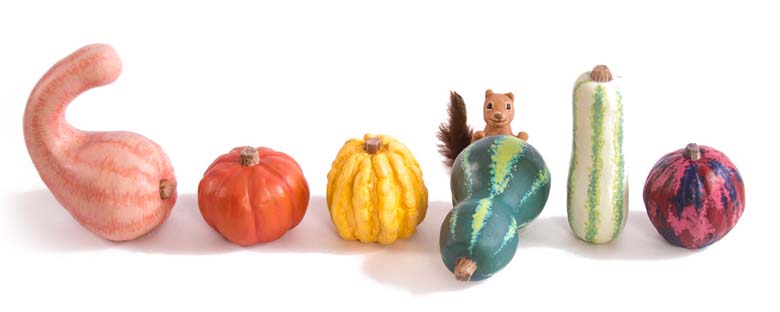
(Google)
Today’s Google Doodle celebrates the first day of fall in the Northern Hemisphere. But why is it the first day of autumn? Is it an autumnal equinox or a solstice?
Read on more more information:
1. Daytime & Nighttime Are Approximately Equal in Length
There are two equinoxes every year, first the vernal (or spring) equinox around March 20, and second the autumnal equinox around September 22. They are seasonal points on the sun’s path.
The word equinox derives its name from Latin aequus nox, meaning “equal night,” because during an equinox, daytime and nighttime are of approximately equal length.
Equinoxes occur because of the tilt of the earth on its axis. An equinox happens when the plane of the equator passes the sun’s center. During that moment, the tilt of the earth’s axis is not inclined towards or away from the sun and could be considered “parallel” with the sun.
Watch the video above for a visual explanation of the seasonal points and how they affect the duration of daylight and darkness on Earth.
2. Equinoxes Are Not Solstices

(Blogger)
Equinoxes are not to be confused with solstices, of which there are the summer and winter solstices. Solstices are also seasonal sun points. Their name derives from the Latin for “sun stopped,” meaning that the sun “stops” at one point. The summer solstice is the longest day of the year and the winter solstice is the shortest day of the year.
This occurs when the earth is tilted towards the sun (summer solstice) and the away from the sun (winter solstice.)
The summer solstice occurs around June 21, and the winter solstice occurs around December 21.
3. It’s Important to Many Cultures

Druids celebrate the Autumn equinox on Primrose Hill. (Getty)
Equinoxes are important to many cultures around the world and were one a common cause for celebration in pre-Christian Europe.
The most common cultural facet still attached to the autumnal equinox is the idea of “harvest,” which is seen throughout the world from Korea to the Americas.
4. The Winter Solstice is Next

(Getty)
The next astronomical phenomenon in 2015 is winter solstice, which occurs on December. It is the shortest day of the year and the longest night. It is an important day in many religions and cultures. For the Northern Hemisphere, it occurs every year around December 25, which is also the date of Christmas.
5. Other Planets Have Equinoxes

(Wiki)
Just like Earth, other planets have equinoxes, too.
Above shows the planet Saturn depicted during one of its equinoxes.
However, planets like Saturn don’t have annual equinoxes in the sense of Earth years. They are more random to our calendar, and the next equinox on Saturn won’t occur until 2024. The last one was in 2009.
They occur just the same with the planet changes its tilt on its axis and have been known to disrupt satellites orbiting Earth.